
Lizards Around Las Vegas, Wildlife Around Las Vegas
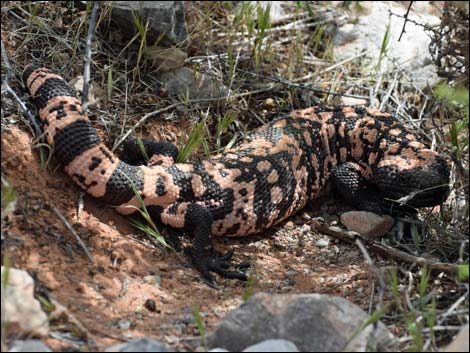 |
General: Banded Gila Monsters (Heloderma suspectus cinctum) are large, heavy bodied lizards with large, bead-like black and orange scales. Taxonomy: Beaded Lizard Family (Helodermatidae). Description: A large (total length: 45-60 cm [18-24 in.]), heavy bodied lizard with black, orange, pink, and yellow spots and crossbands on the dorsum. The scales on the dorsum are large, round, and bead-like, suggesting Indian beadwork. The tail is short, sausage-shaped, and banded. The tongue is black and forked, and it is flicked in and out like a snake. These lizards move on short legs with an awkward, lumbering gate. People sometimes see Western Chuckwallas and think they are Gila Monsters, but Chuckwallas have small scales and usually are wide-bodied. |
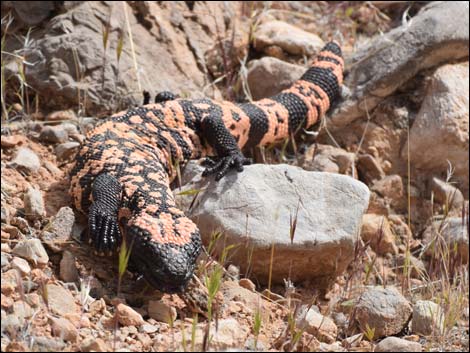 |
Diet: Feeds on eggs of birds and tortoises. Also eats small mammals (including nestling rabbits) and lizards. Habitat: Mojave Desert Scrub, Pinyon-Juniper Woodlands, and desert riparian habitats (Upper Sonoran and Pinyon-Juniper life zones). Found on the lower slopes of rocky canyons, mesic flats, and flats with grassland or succulents. Uses rocks and burrows of other animals for cover. Range: The species occurs in southern Nevada and adjacent southern California, extreme southwestern Utah, and southward through southern Arizona and southwestern New Mexico into northwestern Mexico. This subspecies occurs in the northern portion of the species’ range and western Arizona, and it probably is widespread in Clark County on the lower slopes of mountain ranges, canyon bottoms, and washes, especially near water and damp areas. There are few observation records in Clark County, and the local distribution of this species is poorly known. |
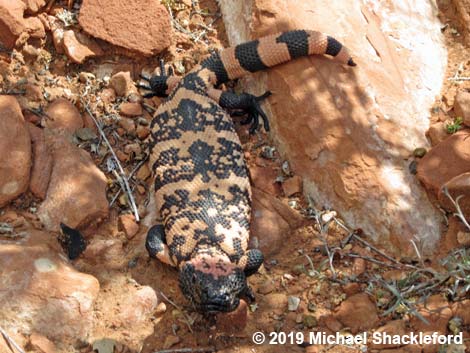 If you were a tasty bird egg or tortoise egg, or maybe a baby bunny, this might be the last face you ever see! |
Comments: Venomous. This is the only venomous lizard in Nevada. Although appearing slow and awkward, this species can bite quickly and inflict a painful bite. They secrete venom via grooved teeth into their saliva, and then use their powerful jaws to grind the saliva into the bite. These lizards are not dangerous unless handled and should not be harmed. Mating occurs during the summer and 3-5 eggs are laid in the fall and winter. The sausage-shaped tail serves as a fat-storage organ. |
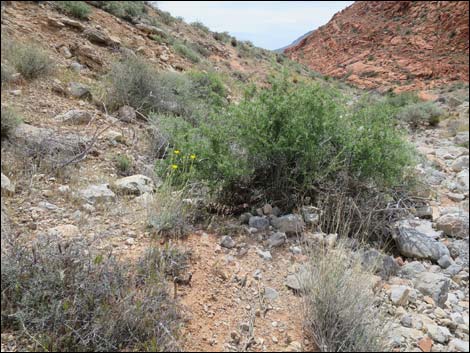 Gila Monster under a bush -- hard to see! |
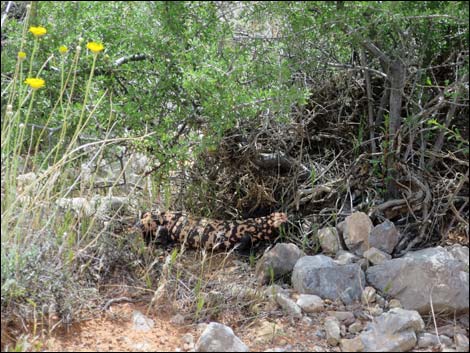 Gila Monster under a bush |
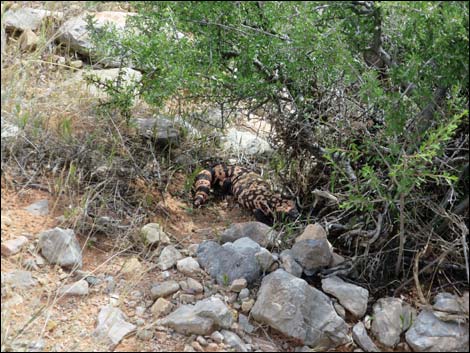 |
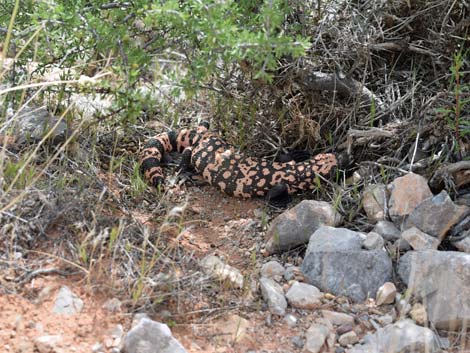 |
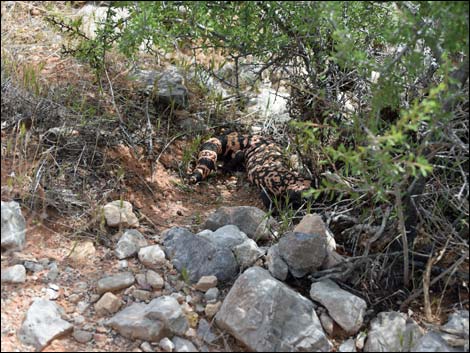 |
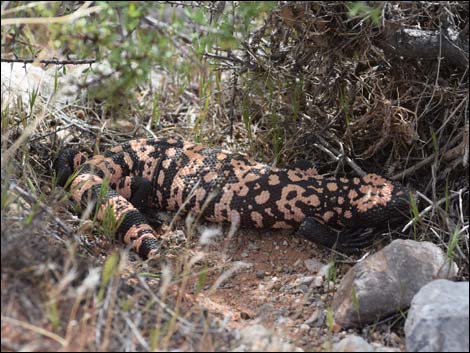 |
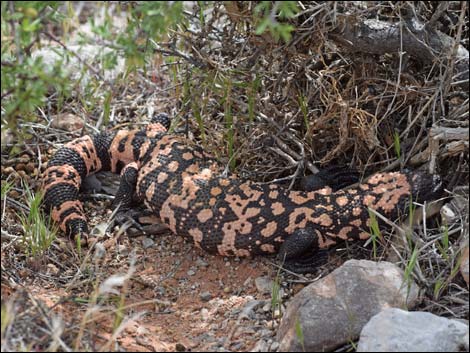 |
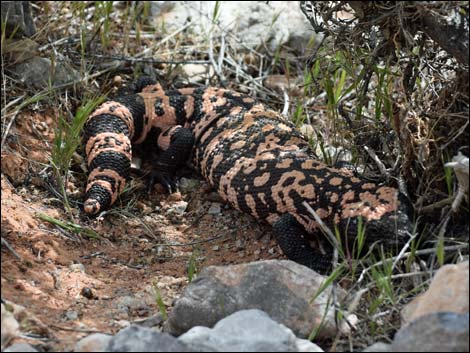 |
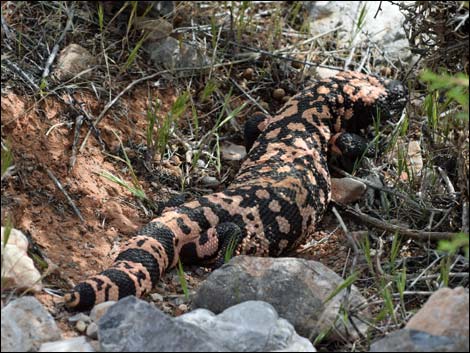 |
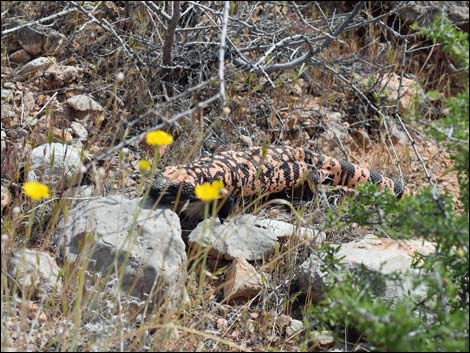 |
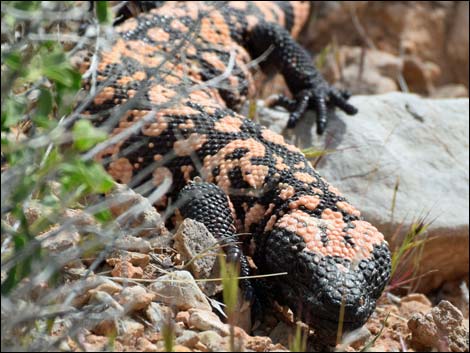 |
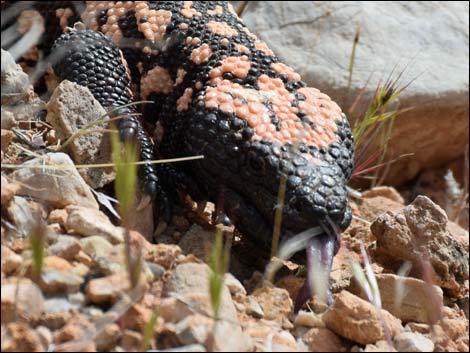 |
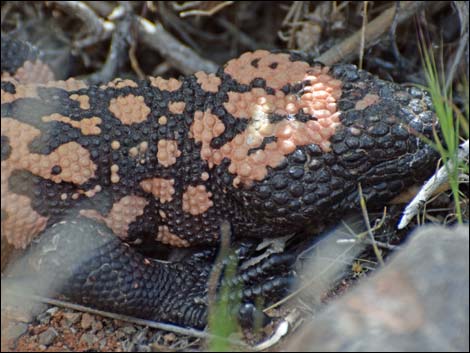 |
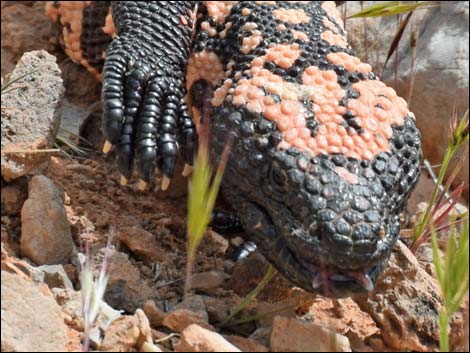 |
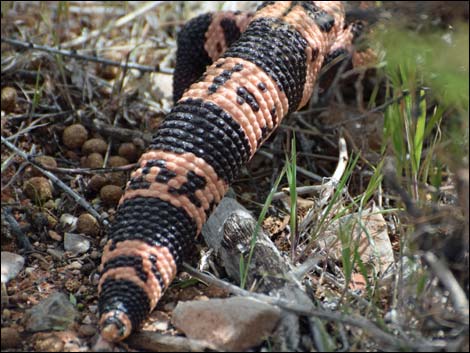 |
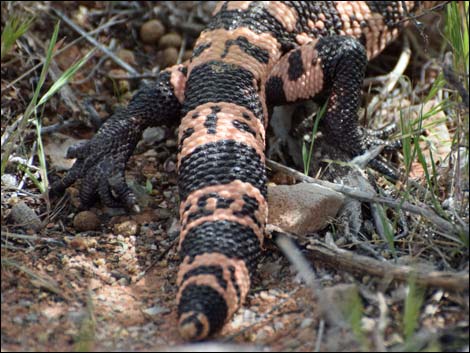 |
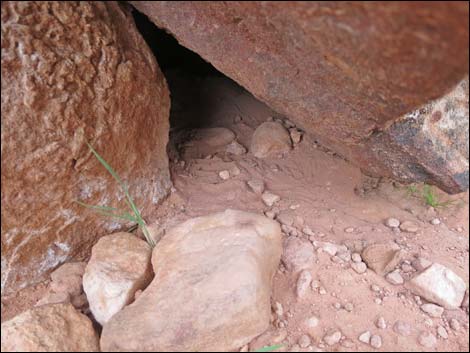 Gila Monster hole (notice the tracks)? |
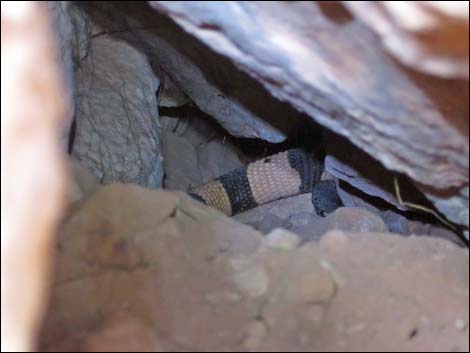 Gila Monster tail in the hole! |
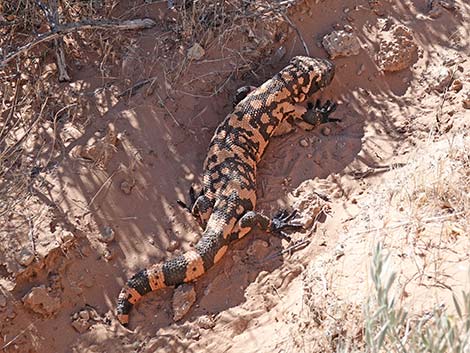 |
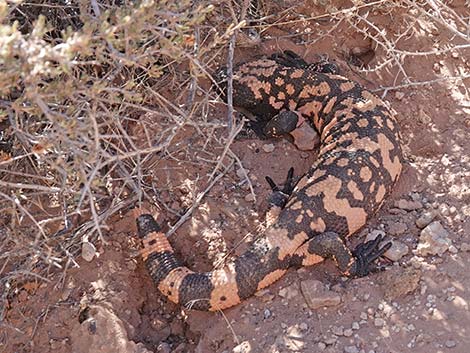 |
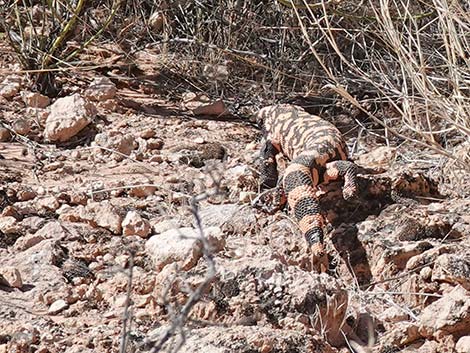 |
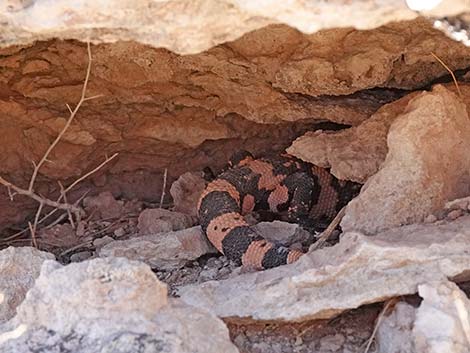 |
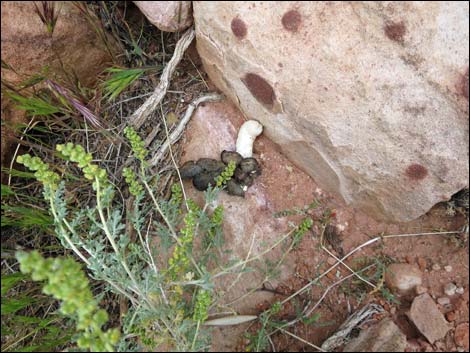 Gila Monster poop |
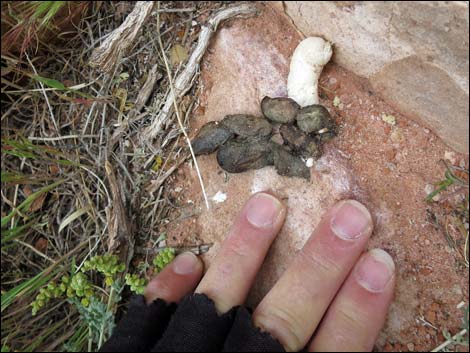 Gila Monster poop |
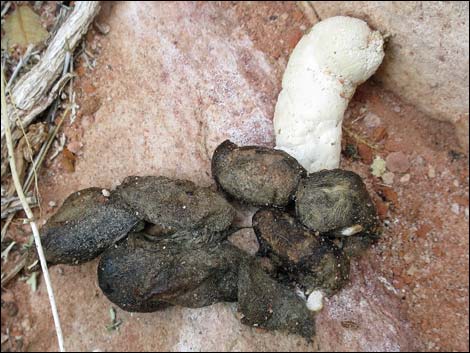 Gila Monster poop |
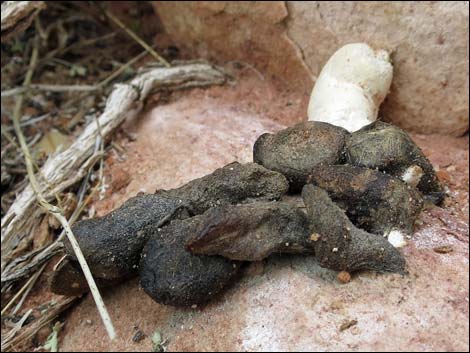 Gila Monster poop |
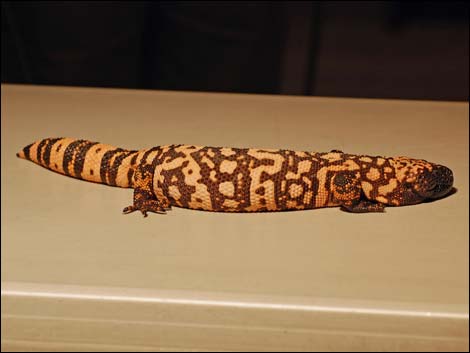 Gila Monster at Arizona-Sonora Desert Museum |
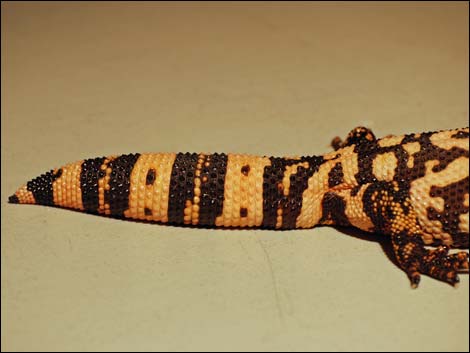 This, plump, sausage-shaped tail serves as a fat-storage organ |
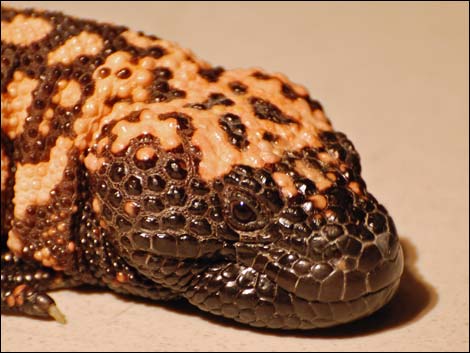 Large jaw muscles that can deliver a tremendous, grinding bite |
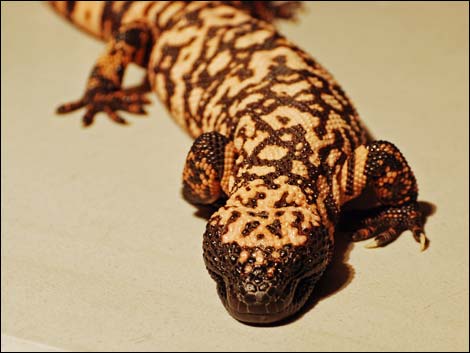 Large jaw muscles that can deliver a tremendous, grinding bite |
Note: All distances, elevations, and other facts are approximate.
![]() ; Last updated 220814
; Last updated 220814
| Lizards Around Las Vegas | Wildlife Around Las Vegas | Glossary | Copyright, Conditions, Disclaimer | Home |